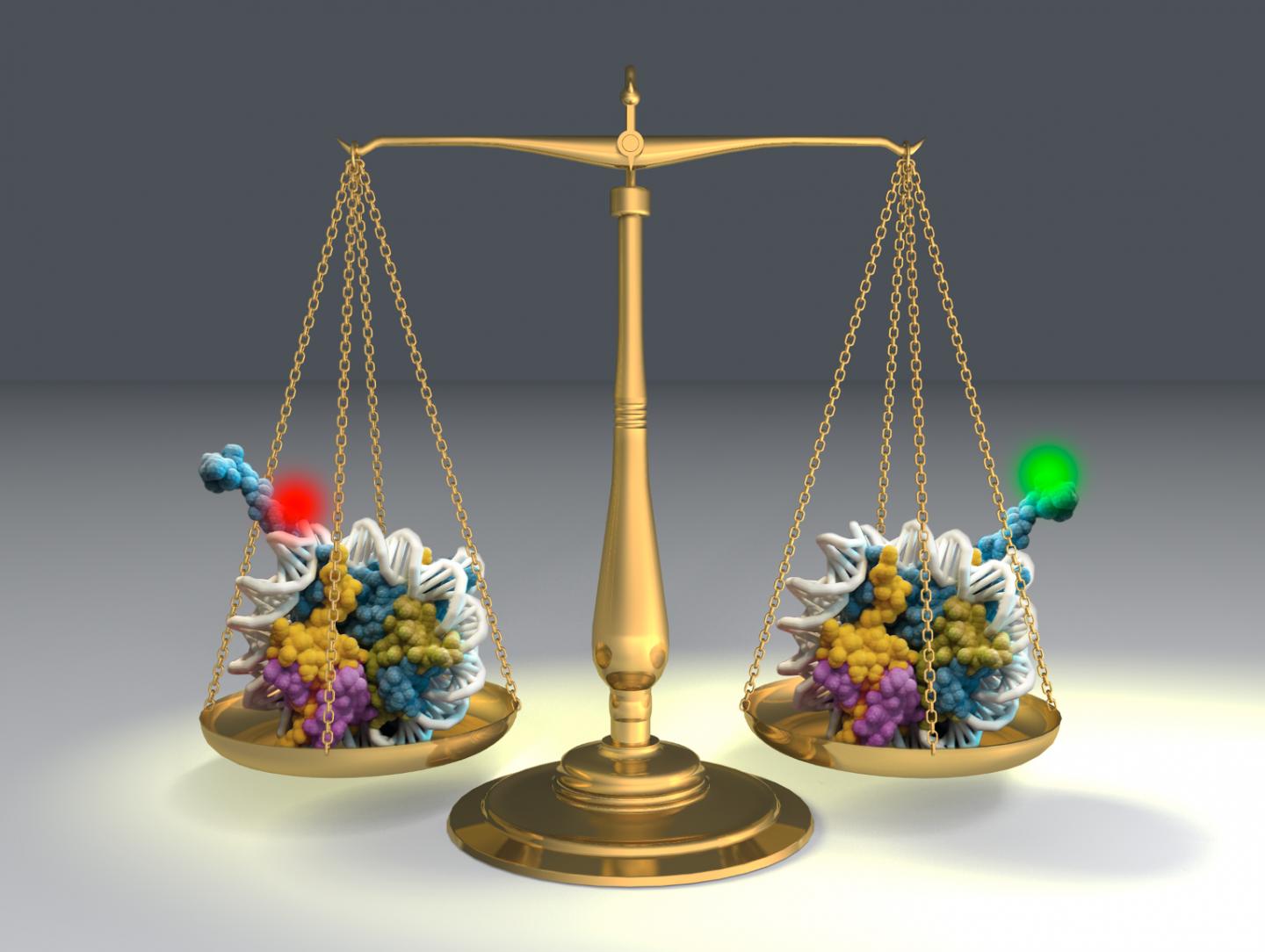Fourth study published over two-year span that analyzes key leukemia protein

Credit: Northwestern University
CHICAGO — Northwestern Medicine scientists have discovered two successful therapies that slowed the progression of pediatric leukemia in mice, according to three studies published over the last two years in the journal Cell, and the final paper published Dec. 20 in Genes & Development.
When a key protein responsible for leukemia, MLL, is stabilized, it slows the progression of the leukemia, the most recent study found. The next step will be to combine the treatments from the past two years of research into a pediatric leukemia “super drug” to test on humans in a clinical trial.
The survival rate is only 30 percent for children diagnosed with MLL-translocation leukemia, a cancer that affects the blood and bone marrow. Patients with leukemia have a very low percentage of red blood cells, making them anemic, and have approximately 80 times more white blood cells than people without cancer.
“These white blood cells infiltrate many of the tissues and organs of the affected individuals and is a major cause of death in leukemia patients,” said senior author Ali Shilatifard, the Robert Francis Furchgott Professor of Biochemistry and Molecular Genetics and Pediatrics, the chairman of biochemistry and molecular genetics and the director of Northwestern’s Simpson Querrey Center for Epigenetics. “This is a monster cancer that we’ve been dealing with for many years in children.”
There are several types of leukemia. This research focused on the two most common found in infants through teenagers: acute myeloid leukemia (AML) and acute lymphocytic leukemia (ALL).
For the past 25 years, Shilatifard’s laboratory has been studying the molecular function of MLL within its complex known as COMPASS (Complex Proteins Associated with Set1). Most recently, it was demonstrated that COMPASS components are one of the most frequently identified mutations in cancer. The next step of this work will be to bring the drug to a clinical trial setting, which Shilatifard said he hopes will happen in the next three to five years.
“I’ve been working on this translocation for more than two decades, and we’re finally at the point where in five to 10 years, we can get a drug in kids that can be effective,” Shilatifard said. “If we can bring that survival rate up to 85 percent, that’s a major accomplishment.”
Earlier work from Shilatifard’s laboratory published in Cell in 2018 identified compounds that could slow cancer growth by interrupting a gene transcription process known as “Super Elongation Complex” (SEC). It was the first compound in its class to do this.
This MLL stabilization process discovered in the most recent paper could potentially work in cancers with solid tumors, such as breast or prostate cancer, said first author Zibo Zhao, a postdoctoral research fellow in Shilatifard’s lab.
“This opens up a new therapeutic approach not only for leukemia, which is so important for the many children who are diagnosed with this terrible cancer, but also for other types of cancers that plague the population,” Zhao said.
“The publication of these four papers and the possibility of a future human clinical trial could not have happened if it weren’t for the cross-disciplinary collaboration at Northwestern,” Shilatifard said.
###
This collective research was made possible because of the interdisciplinary collaboration between Northwestern’s chemistry, biochemistry, biology and clinical departments, Shilatifard said.
Other Northwestern co-authors included Lu Wang, Andrew Volk, Noah Birch, Kristen Stoltz, Elizabeth Bartom, Stacy Marshall, Emily Rendleman, Carson Nestler, Joseph Shilati, Gary Schiltz and John Crispino. Shilatifard and Crispino are members of the Robert H. Lurie Comprehensive Cancer Center of Northwestern University.
Funding for this research was provided in part by the National Institutes of Health grant T32 CA070085 and the National Cancer Institute Outstanding Investigator Award R35-CA197569.
Media Contact
Kristin Samuelson
[email protected]
847-769-6596
Original Source
https:/
Related Journal Article
http://dx.




